As dryer exhaust is vented out of your home, a pleasant, clean smell fills the air. Although it may not seem like it, this exhaust can also be filled with carbon monoxide, lint, and stale, hot, humid air. Because of this, there are several regulations in place controlling where a dryer exhaust vent can be placed.
Dryer exhaust can negatively impact your health in various ways and can also impact your home negatively as well. For this reason, dryer exhaust vents must be placed strategically so that they vent outside, within your property lines, and away from any openings of the home.

Dryers must vent outside. They must be at least 3 ft from property lines and openings into the house, and at least 10 ft from mechanical air intakes. It’s wise to locate dryer vents at least 20" above the ground, 3 ft from propane tanks and other flammable substances, and 10 ft from AC condenser units.
Dryers Must Vent Outside
Section M1502.3 of the International Residence Code (IRC) states:
“Exhaust ducts shall terminate on the outside of the building.”
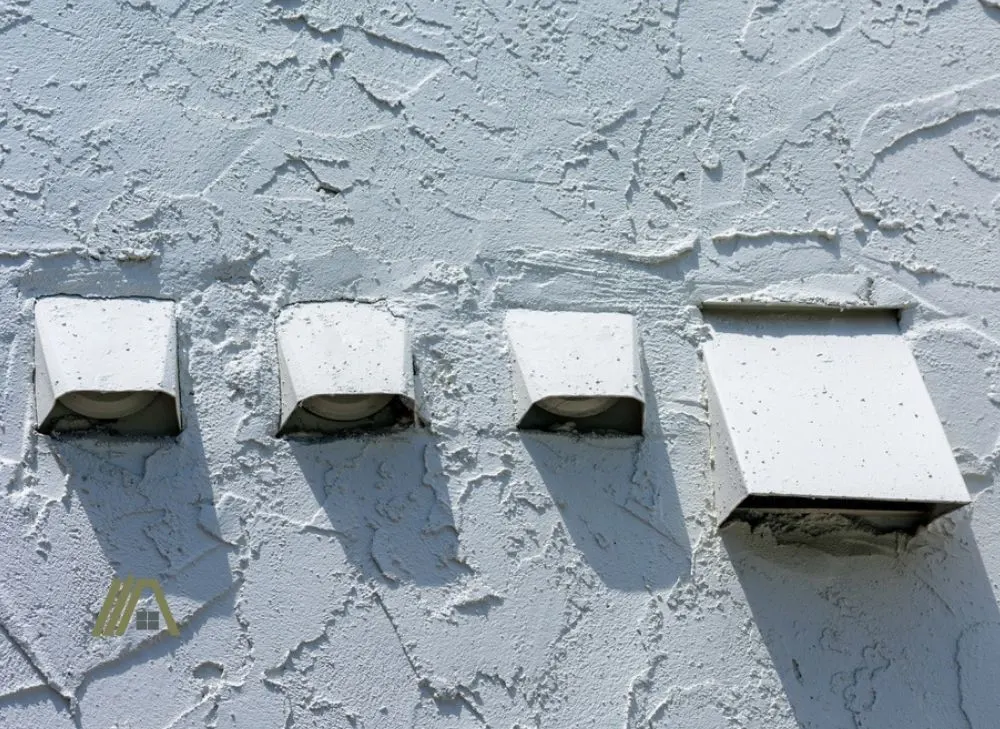
This is not a suggestion; it is a rule regarding the safety of those living in the building.
Although the exhaust from dryers may appear to be mostly harmless, it cannot be vented inside of your home for a variety of reasons.
The most dangerous aspect of dryer exhaust, specifically the exhaust from a gas dryer, is the fact that it contains carbon monoxide. High enough concentrations of carbon monoxide can be fatal to those inside of a home.
Carbon monoxide is generated from the combustion that takes place in gas dryers.
Dryer exhaust also contains air that is very hot and humid. This air would not only be uncomfortably warm, but the humidity could gather where the exhaust is released and damage wood flooring, paper goods, or other sensitive materials.
Lint can also be transported in the exhaust from a dryer. If this accumulates in your home, it can be a fire hazard as well as a hassle to clean up.
Dryer Vent Clearance From the Ground
It is recommended that dryer vents should terminate at least 12″ above the ground, but this is not expressly stated in the IRC.
Although the recommendation isn’t found in the dryer vent section of the IRC, it is recommended by many professionals for various reasons.
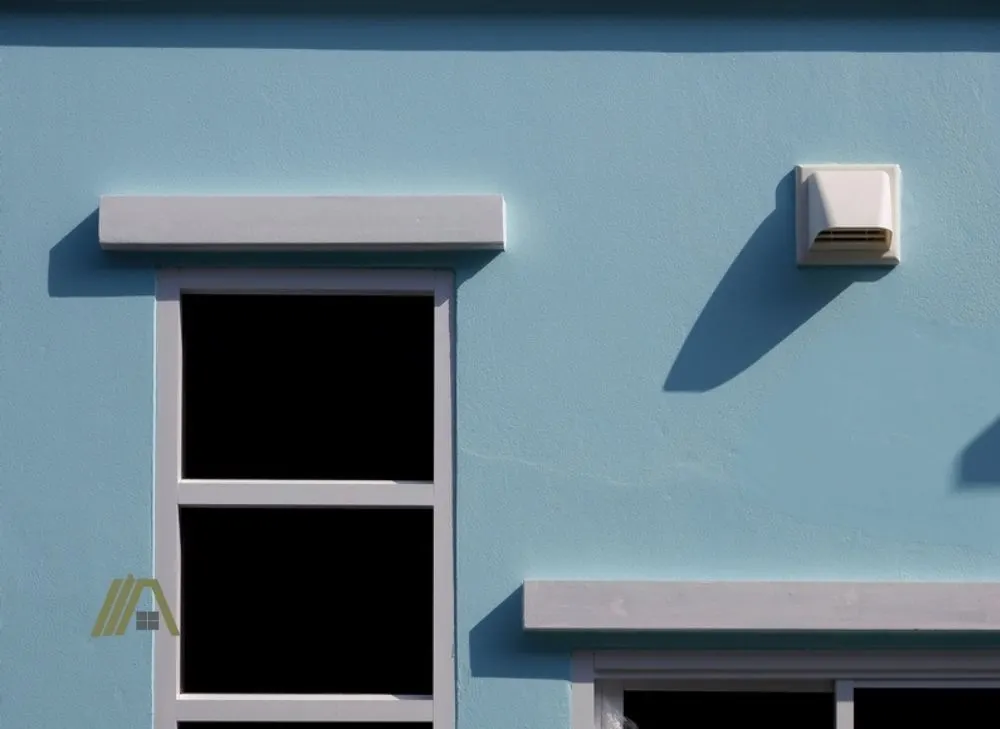
If the vent is too close to the ground, pests can easily get in and build nests. This can slow the airflow and impair the performance of your dryer.
If the animals die, this will produce a foul smell that can be detected from the inside of your home. The animals would also be fairly hard to remove.
A low dryer exhaust vent could also have various obstructions at its opening. Flowers, grass, and other vegetation may grow and block the opening of your exhaust vent. This would impair the performance of the vent.
If you live in an area that gets snow, snowbanks could block this opening even more and potentially cause the exhaust to back up and enter your home. This would pose all of the risks mentioned in the prior section.
Required Distance Between Vent and Property Line
According to Section M1504.3 of the IRC, vent openings must terminate
“Not less than 3 feet (914 mm) from property lines.”
This is not a recommendation but a requirement for your dryer vent exhaust system. This rule is put in place to avoid conflict with neighbors.
Venting dryer exhaust, as well as basement exhaust, into or near your neighbor’s yard can come with a variety of problems, ones that can lead to either uncomfortable conflict or even legal action.
Your dryer exhaust, as said before, can contain carbon monoxide, hot and humid air, as well as lint. All of these factors make for an unpleasant experience for those who come in contact with it.
If your neighbor has a patio or other recreational space where your dryer exhaust is venting, it is likely that your exhaust would bother the neighbors. Air quality would be uncomfortable, odd smells would be recognizable, and lint may accumulate in their yard.
All this should not be their problem since this exhaust is not theirs.
Because undesirable air is venting into their property, legal action could be taken (for not following building codes as well as for encroaching upon their property). At the very least, you could get some complaints and unfriendly glances.
Distance From Openings Into the House
In the same section mentioned above (M1504.3), the IRC states that a dryer exhaust vent must also terminate at least 3 feet from openings of the home such as windows and doors.
Again, this is not a recommendation but rather a rule that must be followed for similar reasons as enforcing venting dryer exhaust outside.
Each of these openings, when opened, can allow for the intake of this exhaust air into your home.
Although lint may not travel into these openings easily, carbon monoxide and hot, humid air could still make their way into your home.
This would mean potentially dangerous levels of carbon monoxide. The hot, humid air could damage wood or paper products as well as cause general discomfort.
Dryer Vent Clearance From Mechanical Air Intakes
In section M1504.3 of the IRC, it also mentions that a dryer exhaust vent must terminate at least 10 feet away from mechanical air intakes.

Appliances that utilize mechanical air intakes include furnaces, fireplaces, gas dryers, and gas heaters.
These mechanical air intakes are important because they provide valuable oxygen for combustion and also ensure that a negative pressure system isn’t being formed with air exiting your home but not being replaced.
Not only is the oxygen in this fresh air needed for combustion in the furnace and other appliances, but this fresh air is also replacing the air exhausted from the appliance. In other words, the air is not only used in appliances but is experienced in the home as well.
That being said, if dryer exhaust is to be taken in by mechanical air intakes, your home’s air quality will be negatively impacted. Carbon monoxide and stale, humid, hot air will enter your home and may cause danger and discomfort.
Keep Dryer Vent and AC Condenser Unit Apart
Although an AC condenser unit is not explicitly mentioned in the dryer vent sections of the IRC, similar restrictions should apply since an AC condenser unit pushes outdoor air into the home.
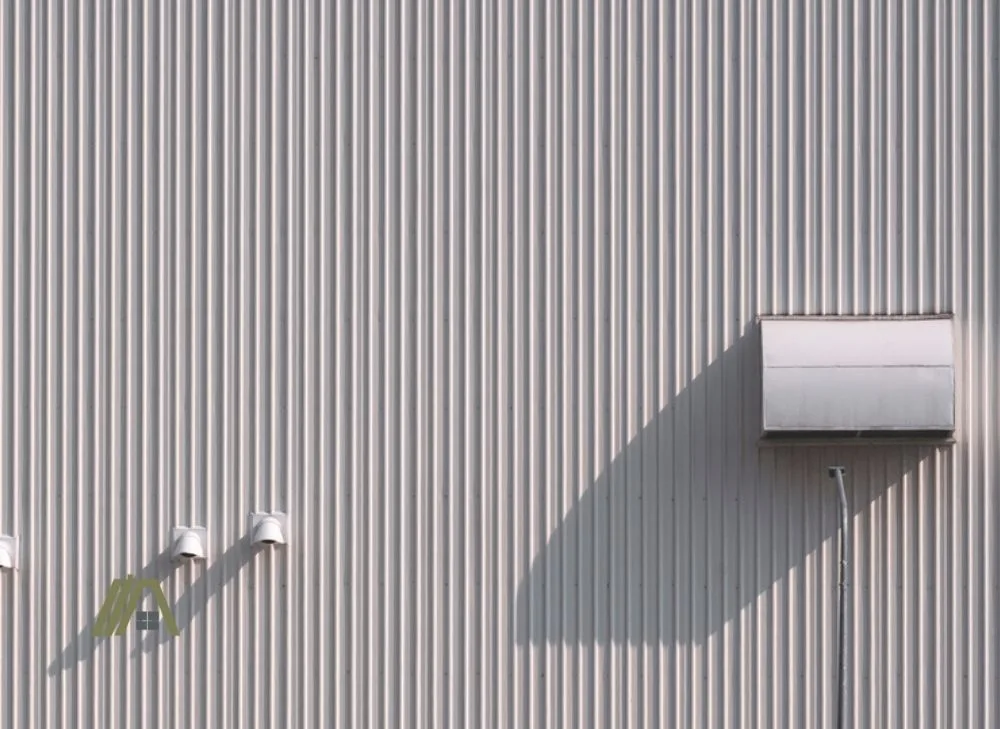
Because the condenser could mechanically pull dryer exhaust into the home if the vent is close enough, the same restrictions mentioned in section M1504.3 of the IRC should be applied here. This means that the AC condenser unit should be at least 10 feet away from dryer exhaust vents.
If the AC condenser unit is within 10 feet of a dryer exhaust vent, similar problems with air quality will arise as in previous sections.
Carbon monoxide poisoning is once again the biggest concern for allowing dryer exhaust into your home.
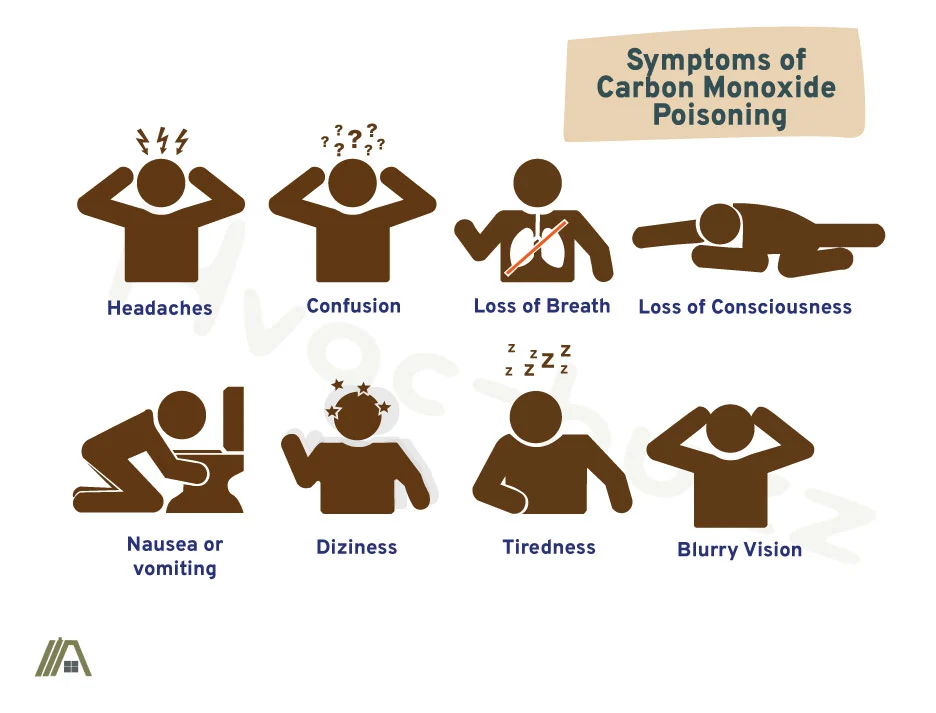
Although the condenser may not transport much carbon monoxide into your home, if there are other sources of combustion in your home, carbon monoxide may accumulate and be at dangerous levels.
Furthermore, your AC condenser unit is trying to cool outside air in order to supply your house with cold, conditioned air. If the air is heated, as dry air is, then the AC unit is forced to work harder and use more energy, thus making your home less energy-efficient.
Dryer Vent Clearance From Furnace Intake

A furnace intake is an opening into a building. A dryer vent must be a certain distance from this opening as per specific instructions from the manufacturer or, if there are none, at least 3 ft away, according to the IRC. This distance is important for safety reasons.
A furnace intake counts as an opening to your house. Therefore, this opening must be taken into consideration for dryer vents that are required to terminate at a specific distance from openings to the building.
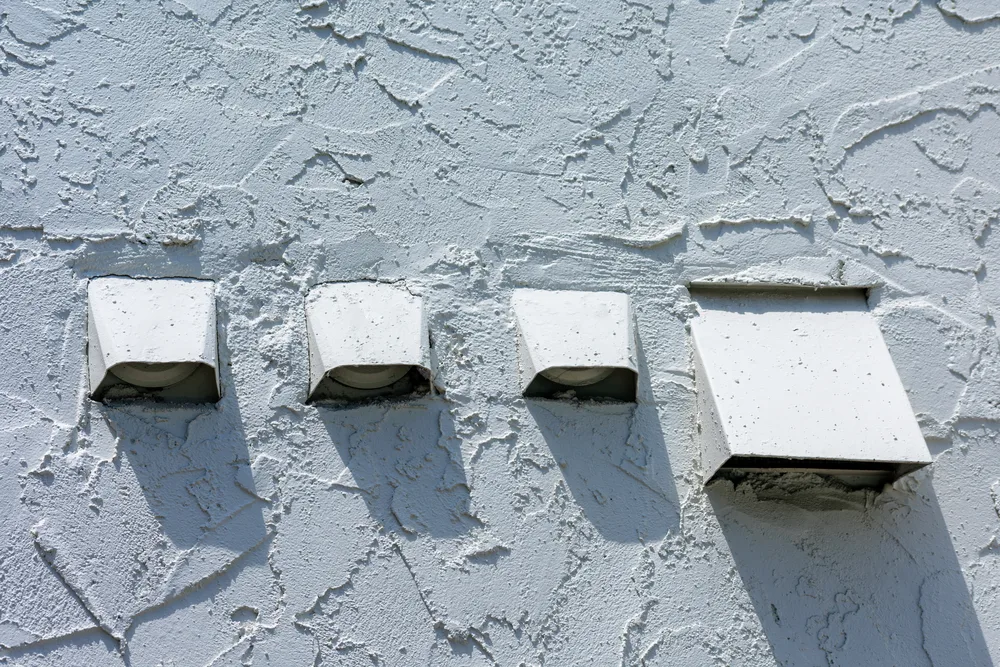
According to Section M1502.3 of the International Residential Code (IRC):
“Exhaust duct terminations shall be in accordance with the dryer manufacturer’s installation instructions.”
However, if there are no specified locations for the terminal, the duct cannot terminate within 3 ft (or 914 mm) of any opening to the house, in any direction. But you should be sure to comply with the manufacturer’s directions, as long as it is a listed (approved according to the code) product.
Distance From LP Storage Tanks
Although the section on dryer exhaust in the IRC does not explicitly mention liquid propane storage tanks, it would be wise to keep them at a distance from dryer exhaust vents.
Similar to the recommendations of section M1504.3 of the IRC, it would be wise to keep dryer exhaust vents at least 3 feet away from any liquid propane storage tanks. This way, the heat from the dryer exhaust can be dissipated and not impact the LP storage tank.
Unlike dryer exhaust vents that are close to ait intake vents, windows, and doors, having an LP storage tank exposed to dryer exhaust does not create air quality hazards. The hazards created in this scenario are instead explosion-related.
When LP tanks are exposed to heat, they may explode. Dryer exhaust can contain high amounts of heat, usually about 50-71℃ or 120-160℉. These temperatures are high enough to cause an explosion.
LP storage tanks are full of liquid propane, which is a highly flammable substance. When exposed to the heat of dryer exhaust, these tanks can explode, which can cause serious damage to your home as well as those in the vicinity of the explosion.
Venting through the attic and out the roof can be a really effective way of satisfying all of these requirements, but clearances aren’t the only code-related information you need about venting your dryer.
Sources
https://www.familyhandyman.com/article/indoor-vs-outdoor-dryer-vents/
https://www.gowrie.com/pdfs/Gowrie%20Risk%20Report%20-%20Propane%20Storage%20-%20Final.pdf
